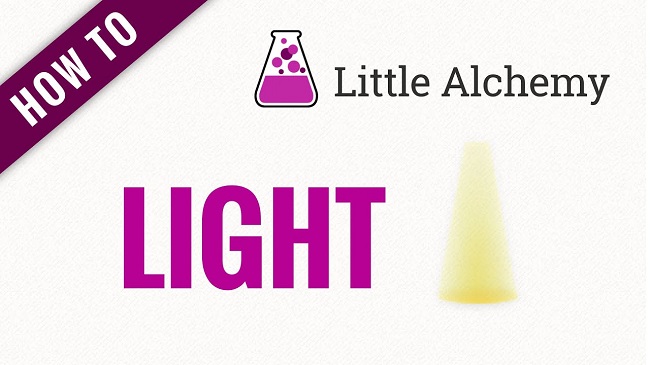Creating light requires 9 separate actions. If this is your first time using Little Alchemy, you can begin at the very beginning with Step 1. You can pick up your Little Alchemy experience wherever you left off, even if you have already manufactured some of the things contained inside these steps.
Contents
How to Make Light in Little Alchemy

- earth + fire = lava
- air + fire = energy
- air + lava = stone
- fire + stone = metal
- air + stone = sand
- fire + sand = glass
- energy + metal = electricity
- electricity + glass = light bulb
- electricity + light bulb = light
That settles it, then. Simples. More information is provided below that may be useful if you are just starting out or if you are passing this along to a friend who is. If you need further information, you can find it in the following areas.
If any of the required steps’ components have already been written about, we’ll just link to that post so you can read it in a new window. You will have detailed instructions on how to make each object, complete with screenshots for each stage, whether or not the entire details have been provided.
How to Make Light Bulb in Little Alchemy
The production of a light bulb is Little Alchemy’s next step toward the production of light.
The link will take you to the Little Alchemy instructions for making a light bulb. Let’s go on to the next phase of creating Light, which is constructing NEXTITEM.
How to Make Light in Little Alchemy
For those who are already competing:
Step 1: From the Elements menu, pick LIGHT BULB and drop it anywhere on the game board.
Step 2: After placing a LIGHT BULB on the board in Step 1, choose ELECTRICITY from the Elements menu and drop it on the bulb.
Congratulations, you have learned Little Alchemy’s entire process for creating light. You may want to check out the link below (assuming we get there) to see what other items can be created using Light now that you have made it in Little Alchemy:
How To Make Light Bulbs In Little Alchemy 2
Light Bulbs are a vital commodity in the game, used mostly in the production of Light. In Little Alchemy 2, Glass and Electricity combine to create Light Bulbs. However, other forms of illumination can be used in the production of light bulbs.
Step 1: The only way to create Light Bulbs in Little Alchemy 2 that does not include any other sources of light is to use electricity. This technique allows you to create light bulbs from scratch using just common materials.
Step 2: To begin, you’ll need to mix Earth and Fire to create Lava.
Step 3: After that, add more Earth to produce more Land.
Step 4: Then, a Continent can be formed by combining Earth and Land.
Step 5: The next step is to join two continents together to form a planet.
Step 6: The planet can be transformed into a Sun by applying fire to it.
Step 7: Energy can also be created by fusing together two Fires.
Step 8: You must now combine Air and Lava to create Stone.
Step 9: Once you have Stone, you can turn it into Sand by combining it with Air.
Step 10: The next step is to use fire on sand to create glass. Sand can also benefit from the application of Electricity, but this will require the generation of Electricity first.
Step 11: To get electricity from the sun, you’ll need to construct a solar cell.
Step 12: Solar cells can now be used in conjunction with sunlight to generate electricity.
Step 13: The last step is to put glass and electricity together to create a light bulb.
Conclusion
Light Bulbs are a vital commodity in the game, used mostly in the production of Light. In Little Alchemy 2, Glass and Electricity combine to create Light Bulbs. However, other forms of illumination can be used in the production of light bulbs. Containers and light can also be used to create bulbs.
The intriguing component of the process is that a Light Bulb is required to create Light. Therefore, it is one of the procedures you can try to finish if you are interested in learning more about the interconnectedness of Little Alchemy 2. The production of light bulbs using this method is inefficient, though.




























